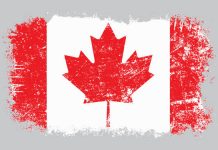Key insights from the week that was.
The Cotality home value index rose another 0.6% in June, leaving prices up 2.3% since mid-February 2025, when the RBA delivered the first rate cut for this cycle. Gains by city were tightly bunched, from 0.5% in Melbourne and Adelaide to 0.8% in Perth. RBA rate cuts have clearly provided significant support over the period, daily data showing 1ppt of the gains have occurred in the two weeks immediately after each RBA rate cut. Importantly, the uptrend in prices and auction clearance rates is continuing as turnover lifts, pointing to robust demand and confidence. Private credit data implies demand is coming from both owner-occupiers and investors, credit for each subset up 0.5% in May and respectively 5.7% and 6.1% over the year. Westpac expects further price gains as the RBA returns the cash rate to a neutral setting by May 2026.
Bolstering expectations for a sustained uptrend in prices, the near-term supply of new housing remains limited. Total dwelling approvals rose 3.2% in May. However, this result follows a 12% decline January to April and a 23% gain in the prior 12 months, leaving the level of approvals just 6.5% higher than a year ago and well below our estimate of underlying demand. Through the first half of 2025, approvals have lacked direction across the states, though affordability favours greater momentum in SA, WA and Qld. For further detail on the outlook for housing, see Westpac’s June Housing Pulse. And, on the broader outlook for Australia’s state economies, our latest edition of Coast-to-Coast.
While the outlook has firmed, discretionary consumer demand remains weak, retail sales were up just 0.2% in the month, slowing annual growth to 3.3%. A rebound in clothing & footwear and department store sales drove May’s increase, partly offset by a second-consecutive decline in food retailing. The broader household spending indicator is due later today.
Offshore, US nonfarm payrolls beat expectations at the margin, with 147k new jobs reported in the month and 16k added to the count for the prior two months. Nonfarm payrolls 3-month change is little changed at 150k, consistent with balance between labour demand and supply. Household employment is weaker, rising just 93k in June and averaging -47k over the past 3 months. However, another 0.1ppt decline in participation in June (after a 0.2ppt reduction in May) edged the unemployment rate down to 4.1%. An unchanged participation rate over May and June would have instead left the unemployment rate near 4.4%.
The ISM surveys continue to point to downside risks for the US labour market through the remainder of the year. In June, the ISM manufacturing employment index fell back near its recent lows to 45.0 even with production broadly unchanged. The ISM services employment index was also well below its 5-year average at 47.2 in June. Thankfully for the US economy, initial claims holding near historic lows suggests downside risks are limited to reduced to job creation not outright jobless.
Chair Powell consequently remains in wait-and-see mode with monetary policy, continuing to believe the US economy remains in robust health and the inflationary impact of tariffs are yet to be seen. This was a key takeaway from the ECB’s Sintra Conference policy panel which also included representation from the leaders of the European Central Bank, Bank of England, Bank of Japan and Bank of Korea.
Fiscal policy developments over the past week are unlikely to sway the FOMC’s views. President Trump’s ‘Big Beautiful Bill’ passed the House 218-214 overnight after being approved by the Senate earlier in the week 51-50 and will now be signed into law. Supporting household discretionary income, the bill extends Trump’s tax cuts from his first term beyond the current year-end expiry. The final version of the bill also includes a temporary 5-year increase in the state and local tax deduction to $40,000 after which it will revert to $10,000. However, lower taxes over future years are to be partly funded by reductions to Medicaid, food stamp and college loan funding as well as the end of clean energy tax breaks introduced by the Biden administration, including the $7,500 consumer tax credit for electric vehicles. The bill is therefore likely to have little-to-no net impact on aggregate consumer spending.
Regarding tariffs, a deal was agreed with Vietnam this week following successful conclusions to negotiations with the UK and China over the past month. Still, the agreed 20% tariff on US imports from Vietnam (40% for transhipped goods, i.e. where goods are transited through Vietnam’s ports to avoid a higher tariff) is a step up from the 10% placeholder tariff instituted by President Trump for 90 days until 9 July. Of more concern though is the limited headway achieved by other nations in negotiations, particularly for key trading partners including Canada, Japan and South Korea. By September, we should have a clearer view of the scale and persistence of the tariffs’ inflationary impact, allowing the FOMC to ease cautiously into year end. But in July, they are set to remain on hold and noncommittal. As an aside, amid global trade uncertainty, Australian trade flows remain highly volatile month-to-month, the trade surplus narrowing sharply from $4.9bn in April to $2.2bn in May, its lowest level in nearly five years.
For China, the terms of Vietnam’s deal with the US are inconsequential. While some Chinese firms have been transiting shipments through Vietnam, this is only a temporary strategy while the China/US deal was agreed and, more importantly, strategic investment in Vietnam and other emerging Asian economies is undertaken. Over the long run, Chinese firms are intent on diversifying their production base across the region to minimise their cost-of-production and maximise export opportunities and political linkages throughout the world. This means Chinese firms operating in neighbouring nations will increasingly seek to add meaningful economic value there and consequently the US tariff for these nations will apply to the output. Profit will then be repatriated back to China and production there limited to high-value-add goods. As attested to by China’s trade surplus over the past few years and the current official NBS PMI readings, which are historically consistent with GDP growth circa 5-6%, this strategy of mutual economic development has already shown considerable success and will continue to compound. The primary risk for China is instead that these trade gains do not filter through to the average consumer, and the hoped-for recovery in consumer spending and housing does not eventuate. External and domestic growth drivers are necessary for China to achieve its development ambitions in the medium-to-long term.
Lastly, Japan’s Tankan survey this week highlighted the lingering threat Japanese manufacturers face from US trade policy, the diffusion index for medium and small manufacturers forecast to fall 4 and 3 points respectively in the September quarter, having edged down 1pt between March and June. Large manufacturers greater flexibility is arguably behind their neutral expectation for the current period. Interestingly, Japan’s services sector is more concerned over the outlook than manufacturers, a 6-8 point fall forecast across small-to-large enterprises by September following broadly unchanged conditions March to June.
While investment intentions are up amongst large and medium-sized enterprises, growth in investment by small firms is subdued. Profitability for FY2025 (ending March 2026) is expected to decline by 5.7%, led by manufacturing. Output prices, an indicator of domestic inflation, meanwhile held steady at around 3.0%, remaining aligned with the Bank of Japan’s 2.0% target. Firms anticipate ongoing labour shortages; but, with uncertainty clouding the outlook, still plan to increase their intake of new graduates by 4.3% this year after FY2024’s 14% rise. This points more towards a persistent skills mismatch than an outright labour shortfall. Domestic economic conditions may therefore become less supportive of further rate hikes, a risk the BoJ is attentive to.












